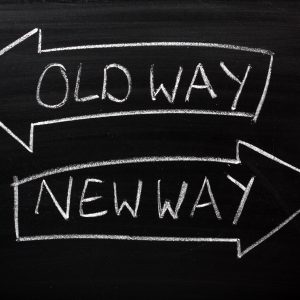Culture in crisis 2. Two paths out of crisis
Jul 22nd
As organisations grapple with extraordinary conditions, many have turned to centralised decision-making, seeking tighter grip through command and control.
In the best cases this has meant clear and consistent messages across the workforce, showing much-needed confidence in leadership. In a crisis, people look to leaders to reduce the impact of loss of control, uncertainty and confusion.
In the worst cases, leadership teams and managers have withdrawn into a bunker, focusing on the single priority of survival. With no organisational leadership, anxiety and fear of the future escalates for employees, damaging productivity, energy and confidence.
As organisations plan their path towards the post-pandemic world, leaders face a critical choice. What they do now will drive the culture and organisational performance long-term. Major change needed to climb out of the economic pit, likely to include significant cost savings and job cuts, is a crisis in itself. What to do?
Path 1: Stay in the bunker, operate in survival mode, do the best you can to problem-solve your way out. The result will be a defensive culture where initiative, innovation, commitment and devolved decision-making don’t happen, creating mistrust and poor performance.
Path 2: Recognise that many of the answers will be outside the leadership bunker, among employees and customers. Open up to them, share the challenges, seek their ideas. By leading outwards, you shape a culture committed to collective results, with people motivated to contribute their best efforts where they are visibly valued.
How to take Path 2 in a crisis? Four key actions:
- Create a vision of the future. Easier said than done – it’s natural to resist change when faced with uncertainty. But urgent, important and difficult decisions must be made for the future, informed by appetite for change, experience of the crisis, current infrastructure and resilience and, importantly, the voice of customers, partners and employees. Take soundings and listen – and not just as a one-off exercise.
- Confirm a leadership narrative of the change. Show people a vision of the future, name the change, tell the story, give people a reason to get through the pain. Communicate your vision at every level – frequently and in person, whether face to face or online. Seek input and wide ownership.
- If you think you are engaging and communicating now, double it. Create an open and honest conversation across the organisation, reducing rumours to zero. Prepare managers at every level to support change workshops. Make sure everyone’s voice is heard.
- Identify and reduce organisational risk. As we emerge from lockdown, understanding of risk will continue to change. Capturing the uplift in empowerment and agility revealed by the crisis means understanding and mitigating new and different risks. Along with greater freedom to innovate comes the need to keep everything legal and safe. This balance needs to be part of the culture.
To make all this happen quickly, identify key people at every level with the skills, potential, mindset and commitment to drive change. Capitalise on their excellence by bringing them into the leadership tent and giving them meaningful roles to engage the organisation.
One organisation started a podcast based on questions submitted by employees, put to senior leaders by different employees. ‘Guest appearances’ from across the business shared their thinking and experiences, so messages weren’t all from the top.
Another firm rapidly crowdsourced ideas for business improvements through focus groups and surveys. Proposals implemented ranged from how customers pay for parking through to strategically transformational propositions. Outputs were aligned to the organisation’s vision and delivered by diverse groups of employees. In this way, each change and improvement felt owned by the people most affected.
This is a collaboration between Stanton Marris and Nicholson McBride Change: Beatrice Hollyer, John Bruce-Jones, Jane Clarke, John Nicholson, Kirsty Hannah
www.nicholsonmcbridechange.com


